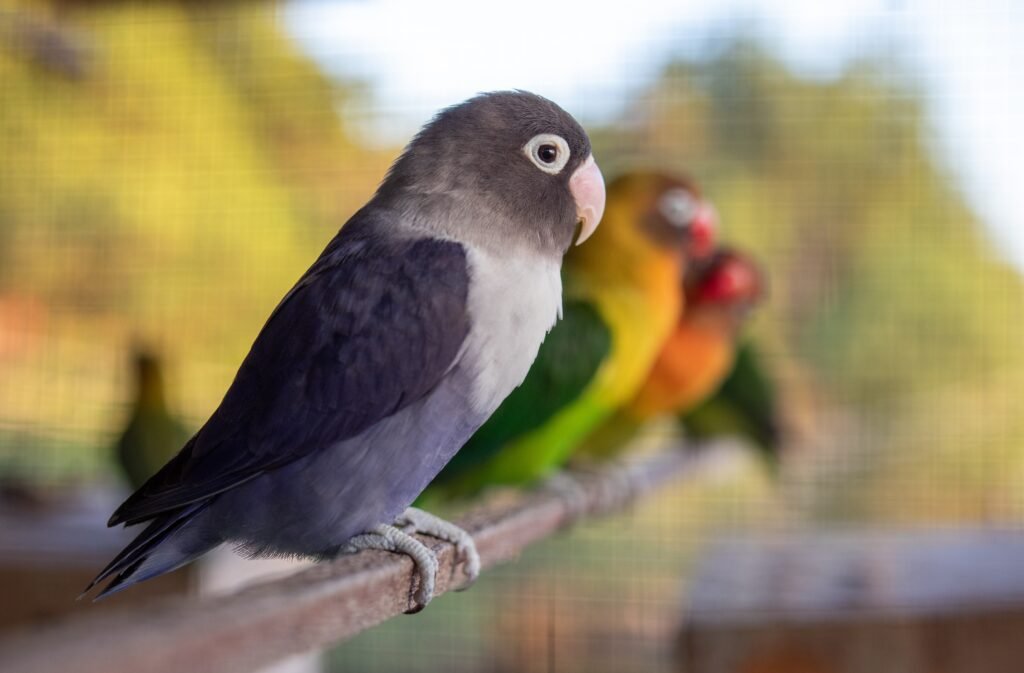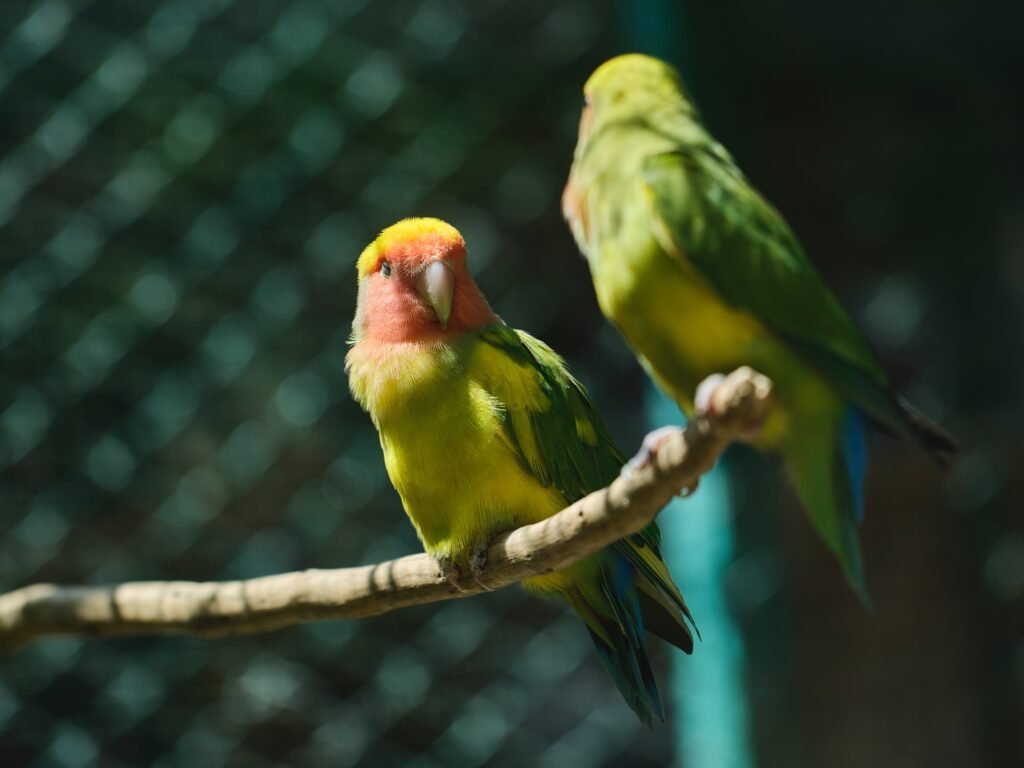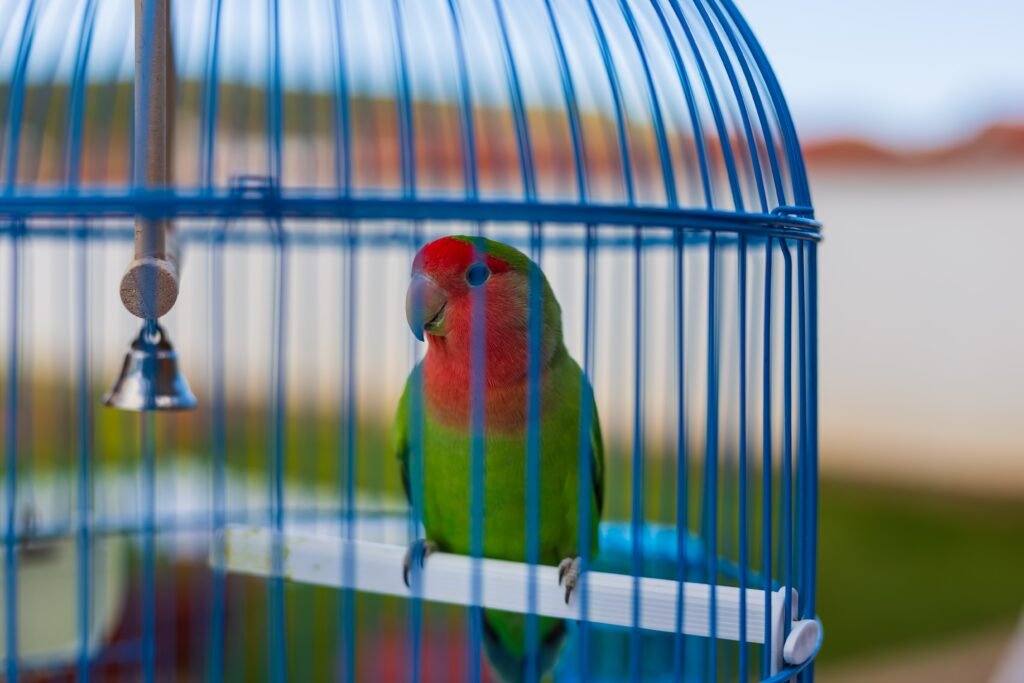 Lovebirds are highly popular pets known for their affectionate nature and beautiful plumage. These small parrots have lively personalities and the ability to form strong bonds with their human companions. One common question that lovebird owners often ask is whether female lovebirds can lay eggs without a mate. In this article, we will explore this topic in detail and provide valuable insights for bird enthusiasts.
Lovebirds are highly popular pets known for their affectionate nature and beautiful plumage. These small parrots have lively personalities and the ability to form strong bonds with their human companions. One common question that lovebird owners often ask is whether female lovebirds can lay eggs without a mate. In this article, we will explore this topic in detail and provide valuable insights for bird enthusiasts.
Understanding Lovebird Reproduction
Before we delve into the question at hand, it is important to understand the reproductive behaviors of lovebirds. Lovebirds are sexually dimorphic, which means that males and females have physical differences that distinguish them from one another. However, these differences can be subtle, and it may require trained eyes or DNA testing to accurately determine the sex of a lovebird.
Lovebirds typically reach sexual maturity at around one year of age. When a pair of lovebirds forms a bond, they engage in various courtship behaviors such as preening each other, regurgitating food, and participating in playful activities. Once the bonding phase is complete, the female lovebird may begin the process of egg-laying.
The Role of Mating in Egg-Laying
Mating is essential for lovebirds, as it triggers hormonal changes within the female that enable her to produce and lay eggs. During the courtship phase, the male lovebird often displays elaborate courtship dances and feeds the female, stimulating her reproductive hormones.
These hormonal changes are crucial for egg production. Without the presence of a mate, female lovebirds are less likely to lay eggs. However, there have been rare cases where female lovebirds have been observed laying infertile eggs without a mate. This phenomenon, known as parthenogenesis, is the ability of a female to produce eggs that develop without being fertilized by a male.
Parthenogenesis in Female Lovebirds
Parthenogenesis is a relatively rare occurrence in lovebirds and is more commonly observed in certain reptiles and insects. It is a form of asexual reproduction in which the offspring develop from unfertilized eggs. In the case of lovebirds, parthenogenesis can result in the production of infertile eggs that cannot hatch into chicks.
While parthenogenesis is a fascinating biological phenomenon, it is important to note that the occurrence of parthenogenesis in female lovebirds is extremely rare and not a reliable method of reproduction. It is not a substitute for the natural process of mating and should not be relied upon as a means of breeding lovebirds.
Factors Affecting Egg-Laying in Female Lovebirds
Several factors can influence the egg-laying behavior of female lovebirds, even in the absence of a mate. These factors include hormonal changes, nesting stimuli, age, and individual variations.
- Hormonal Changes: Female lovebirds may experience hormonal fluctuations that can trigger egg-laying behavior, even without a mate. These hormonal changes can be influenced by external factors such as changes in lighting or temperature.
- Nesting Stimuli: The presence of a suitable nesting environment, including a comfortable nest box or nesting materials, can stimulate egg-laying behavior in female lovebirds.
- Age: Older female lovebirds may be more likely to lay eggs without a mate, as they may have reached a stage in their reproductive cycle where egg production is more frequent.
- Individual Variations: Each lovebird has its own unique personality and hormonal makeup, which can influence its egg-laying behavior. Some female lovebirds may be more prone to laying eggs without a mate, while others may not display this behavior at all.
Caring for Female Lovebirds that Lay Eggs
If you have a female lovebird that lays eggs without a mate, it is important to provide proper care and support to ensure her well-being. Here are some tips to consider:
- Provide a suitable nesting environment: Offer a comfortable nest box filled with appropriate nesting materials such as shredded paper or untreated wood shavings. This will provide a secure and cozy space for your lovebird to lay her eggs.
- Ensure a balanced diet: Provide a nutritious diet consisting of pellets, fresh fruits, vegetables, and occasional treats. Calcium supplementation may be necessary to prevent calcium deficiency, which can lead to egg-related health issues.
- Limit daylight hours: Reduce the amount of light the lovebird is exposed to in order to mimic natural seasonal changes. This can help regulate her hormonal levels and reduce the likelihood of excessive egg-laying.
- Monitor egg-laying frequency: Keep track of the number of eggs laid by your lovebird. If excessive egg-laying occurs, consult an avian veterinarian to rule out any underlying health issues.
- Provide mental stimulation: Engage your lovebird in various activities such as foraging toys, puzzles, and social interaction to prevent boredom and minimize stress. This will help keep her mentally stimulated and reduce the chances of excessive egg-laying.
By following these guidelines, you can ensure the well-being of your female lovebird and provide her with the care she needs, even if she lays eggs without a mate.
In conclusion, while it is possible for female lovebirds to lay infertile eggs without a mate through the rare occurrence of parthenogenesis, it is not a reliable method of reproduction. Mating is essential for triggering the hormonal changes that enable female lovebirds to lay fertile eggs. Understanding the reproductive behaviors and needs of lovebirds is crucial for their overall health and well-being as pets.
FAQ
1. Can female lovebirds lay eggs without a mate?
Yes, female lovebirds can lay eggs without a mate, but it is a rare occurrence known as parthenogenesis. However, these eggs are infertile and cannot hatch into chicks.
2. What role does mating play in egg-laying for lovebirds?
Mating is essential for lovebirds as it triggers hormonal changes in the female that enable her to produce and lay eggs. The male lovebird stimulates the female’s reproductive hormones through courtship behaviors.
3. What factors can influence egg-laying behavior in female lovebirds?
Several factors can affect egg-laying behavior in female lovebirds, including hormonal changes, nesting stimuli, age, and individual variations. Hormonal fluctuations and suitable nesting environments can trigger egg-laying, while older females may lay eggs more frequently.
4. How should female lovebirds that lay eggs without a mate be cared for?
To care for female lovebirds that lay eggs without a mate, provide a suitable nesting environment, ensure a balanced diet, limit daylight hours, monitor egg-laying frequency, and provide mental stimulation. These measures will support their well-being and minimize health issues related to excessive egg-laying.


